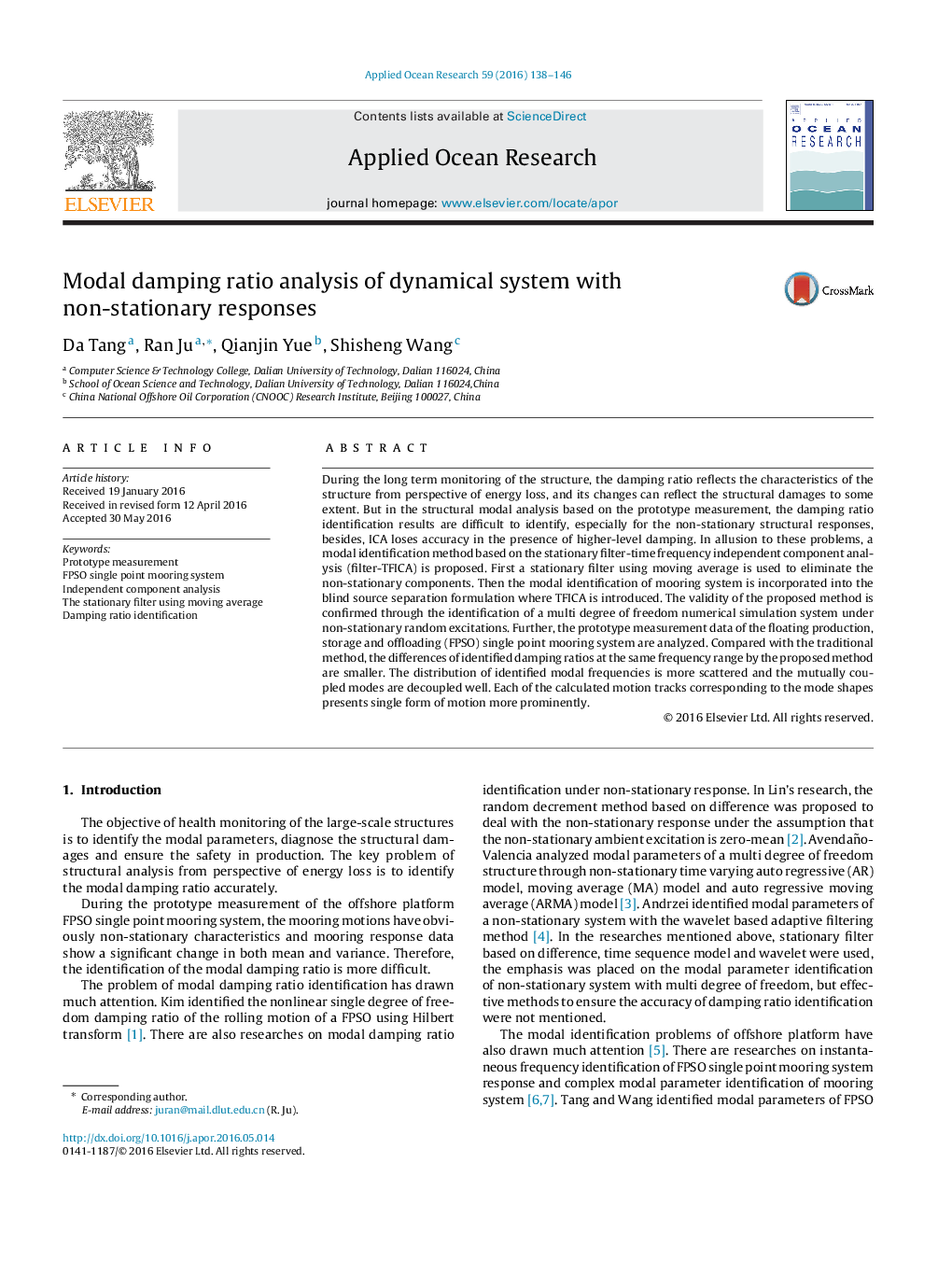| Article ID | Journal | Published Year | Pages | File Type |
|---|---|---|---|---|
| 1719769 | Applied Ocean Research | 2016 | 9 Pages |
•Our research is based on the prototype measurement of the offshore platform FPSO single point mooring system.•In the view of energy loss, the damping ratio is crucial for damage identification.•In order to identify the modal damping ratio accurately, a new method termed “filter-TFICA” is proposed.•The modal frequencies, damping ratio and mode shapes are identified by the proposed method using the prototype measurement data.•We hope this can be useful for more research on the offshore platform.
During the long term monitoring of the structure, the damping ratio reflects the characteristics of the structure from perspective of energy loss, and its changes can reflect the structural damages to some extent. But in the structural modal analysis based on the prototype measurement, the damping ratio identification results are difficult to identify, especially for the non-stationary structural responses, besides, ICA loses accuracy in the presence of higher-level damping. In allusion to these problems, a modal identification method based on the stationary filter-time frequency independent component analysis (filter-TFICA) is proposed. First a stationary filter using moving average is used to eliminate the non-stationary components. Then the modal identification of mooring system is incorporated into the blind source separation formulation where TFICA is introduced. The validity of the proposed method is confirmed through the identification of a multi degree of freedom numerical simulation system under non-stationary random excitations. Further, the prototype measurement data of the floating production, storage and offloading (FPSO) single point mooring system are analyzed. Compared with the traditional method, the differences of identified damping ratios at the same frequency range by the proposed method are smaller. The distribution of identified modal frequencies is more scattered and the mutually coupled modes are decoupled well. Each of the calculated motion tracks corresponding to the mode shapes presents single form of motion more prominently.
